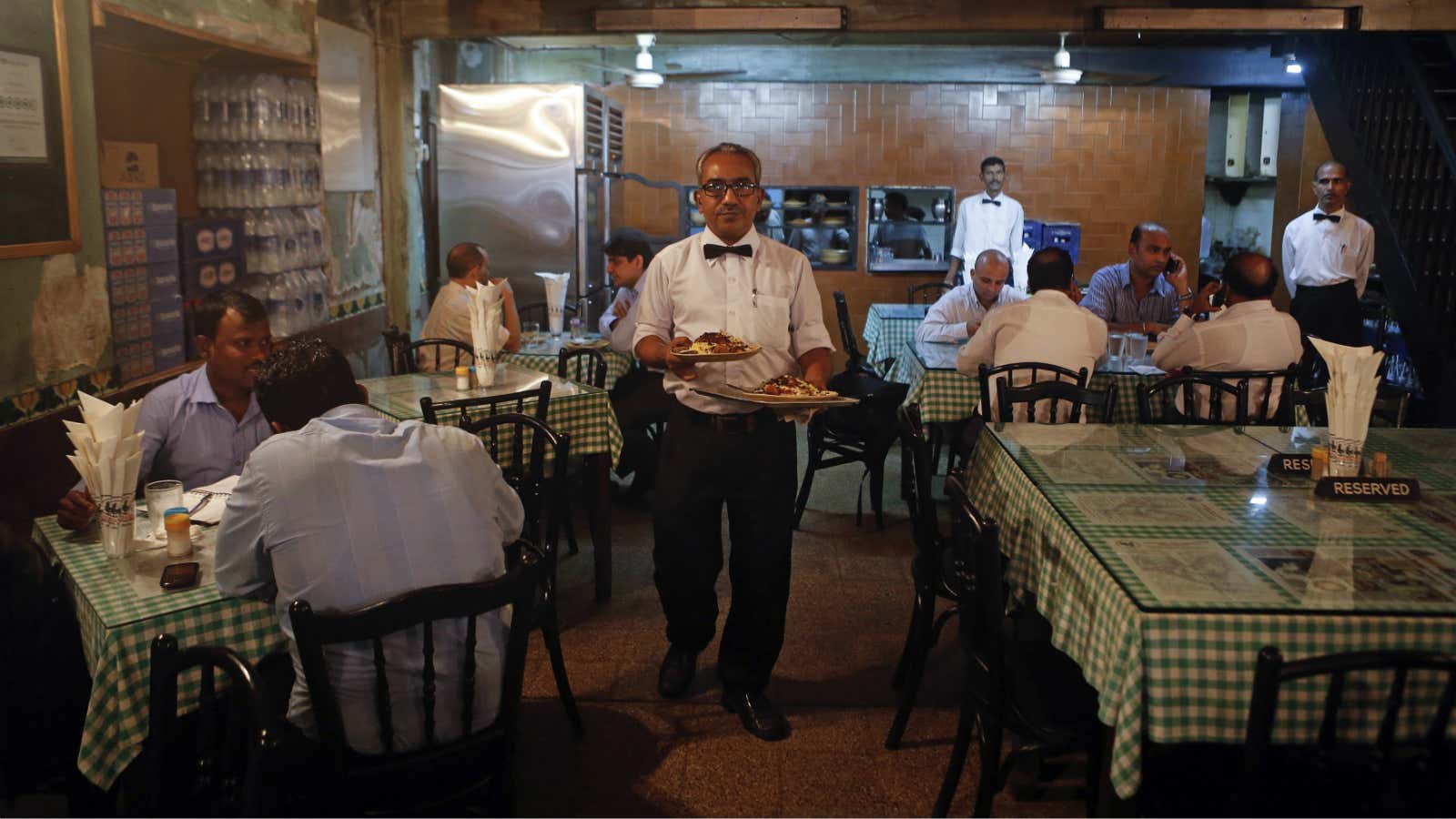Indians are eating out more than ever before—and they are taking their families along.
Dining out with families accounts for 25% of all meals outside home, according to a report released by National Restaurant Association of India (NRAI) and consulting firm Technopak. The report was based on a survey of the eating habits of 3,500 consumers in 24 cities.
Families mostly eat out on occasions such as birthdays and anniversaries, the report said. They stick to ordering north Indian food and spend anywhere between Rs5,000 and Rs6000 a month on eating out.
Indians are replacing home-cooked meals with prepared ones thanks to rising incomes, exposure to food shows, and access to more restaurants. This also explains the rise of popular food chains across cities.
These trends will the grow the food services market from the current Rs3,09,110 crore ($48 billion) to Rs4,98,130 crore ($77 billion) by 2021—a compounded annual increase of 10%, according to the report.
Here’s more on India’s gastronomical evolution.
Old food versus new food
One cuisine that remains popular with foodies is north Indian, which is a rich combination of spicy curries, naans, kebabs etc.
In contrast, high-income households are turning to more experimental and exotic cuisines such as Korean, Burmese, and Mexican. The report refers to such groups as “discerning urbans” who eat out twice or three times in a month, spending anywhere between Rs8,000-10,000.
These regulars are making fine-dine restaurants popular in cities such as Delhi, Mumbai, and Bengaluru.
From cafes to bars
When they step out, Indians prefer fast food chains, for both Indian and western meals, which are more affordable than cafes or bars.
It is also the largest-growing organised food format in the country, estimated at Rs9,125 crore.
Indians are also hitting bars and pubs like never before. As a result, the market for such chains has almost doubled in the last three years to Rs1,065 crore, even though the growth is restricted to the top six cities.
Among cities, Delhi and Mumbai spend the most on eating out—a reflection of their large population and high per capita incomes.
Yet, urban Indians still don’t eat out as much as their peers in other countries. The report estimates that per capital expenditure on eating out in urban India is $110, much lower than Brazil’s $745 and China’s $750. In the US, the figure is far higher at $1,870.
Nonetheless, the market is expected to grow. Goldman Sachs estimates that restaurants will benefit over the next decade as more youngsters spend on having fun.
